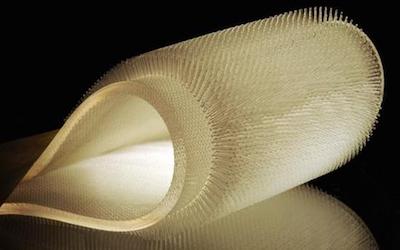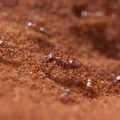PTE考生目前最大的问题之一就是练习题缺乏。除了有限的基本官方书(PLUS,Testbuilder, OG)之外
就没有题了。很多英语基础不是很扎实的同学很难找到练习材料。悉尼文波雅思PTE培训学校专门为澳洲,尤其是悉尼、墨尔本的PTE考生准备了适合PTE听力阅读练习的科学60秒。各位PTE同学可以练习PTE听力中的summarise spoken text和PTE口语中的retell lecture,PTE听力口语-科学60秒-Frosty Moss练习记笔记技巧和复述。废话少说,下面开始:
听力内容:
60秒科学节目(SSS)是科学美国人网站的一套广播栏目,英文名称:Scientific American – 60 Second Science,节目内容以科学报道为主,节目仅一分钟的时间,主要对当今的科学技术新发展作以简明、通俗的介绍,对于科学的发展如何影响人们的生活环境、健康状况及科学技术,提供了大量简明易懂的阐释。
This is Scientific American — 60-Second Science. I’m Cynthia Graber.
Whales, seals and walruses stay warm in chilly water because they have a thick layer of blubber. We humans rely on something like blubber—neoprene rubber wet suits—to spend time in cold water. But the thick versions for really icy water are heavy and ungainly. So rather than taking after big marine mammals, what if we could learn from the littler ones, like beavers and otters?
“These animals are quite small and they can’t carry around a thick layer of blubber. So instead they have fur that is evolved to trap air, and this air provides a layer of insulation for them in water.”
Alice Nasto is a graduate student in mechanical engineering at MIT. Scientists have known about this air-trapping insulation mechanism for a long time, but they had not teased out the details of how it works. So Nasto and her colleagues took on the challenge.
“We’re creating these furry samples from these rubbery materials by laser cutting molds and casting these hairy surfaces. And through our approach we can precisely control the spacing of the hairs and the length of the hairs.”
The researchers then created a system to gather data when their pelts entered and moved through a liquid—in this case not water, but silicone oil, which makes it easier to see air bubbles. The key is to keep the pelt’s air layer intact.
“So when they’re crossing the air water interface, initially their hairy texture is full of air. And then you go into water. How much of the air comes down with you as you’re moving in through the interface. So that’s what this model will tell you.”
They found that the denser the hairs, the more the air gets trapped. Which should keep the animal—or potentially the human in a future furry wet suit—warm. The research is in the journal Physical Review Fluids.
“What we would like to work on moving forward is understanding how, after you dive into the water, how do you maintain this air layer trapped in your fur. And there’s lots of interesting properties of the fur in nature that we haven’t yet looked at in our model that could help explain how this mechanism might work.”
So for now, cold-water divers and surfers will still emulate seals or sea lions. But the day may come when they’ll more closely resemble otters or beavers. Or even a Wookiee on a boogie board.
Thanks for listening for Scientific American — 60-Second Science Science. I’m Cynthia Graber.
墨尔本悉尼文波PTE原创首发
更多精彩请持续关注微信wenbo_tv2。





